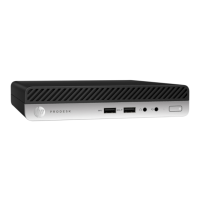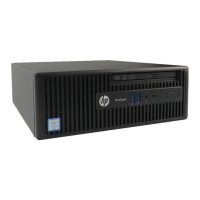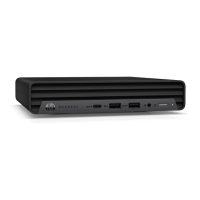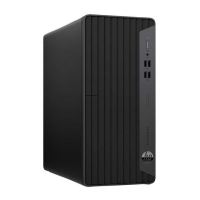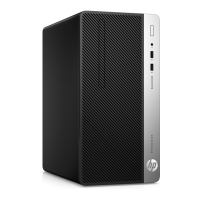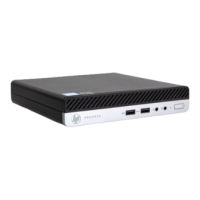Computer Setup—Storage
NOTE: Support for specific Computer Setup options may vary depending on the hardware configuration.
Table 6-2 Computer Setup—Storage
Option Description
Device Configuration Lists all installed BIOS-controlled storage devices.
When a device is selected, detailed information and options are displayed. The following options may be
presented:
●
Hard Disk: Size, model, firmware version, serial number, connector color, SMART category.
●
CD-ROM: Model, firmware version, serial number, connector color (not included for USB CD-ROM).
●
Diskette: Model and firmware version.
NOTE: Displays for USB diskette drives.
Storage Options SATA Emulation
Allows you to choose how the SATA controller and devices are accessed by the operating system.
Supported options include: IDE and AHCI (default).
CAUTION: SATA emulation changes may prevent access to existing hard drive data and degrade or
corrupt established volumes.
IDE - This is the most backwards-compatible setting of the options. Operating systems usually do not
require additional driver support in IDE mode.
AHCI (default option) - Allows operating systems with AHCI device drivers loaded to take advantage of
more advanced features of the SATA controller.
Removable Media Boot
Enables/disables ability to boot the system from removable media. Default is enabled.
Boot Order Allows you to:
●
UEFI Boot Sources: Specify the order in which EFI boot sources (such as a internal hard drive, USB
hard drive, USB optical drive, or internal optical drive) are checked for a bootable operating system
image. Each device on the list may be individually excluded from or included for consideration as a
bootable operating system source.
EFI boot sources always have precedence over legacy boot sources.
●
Legacy Boot Sources: Specify the order in which legacy boot sources (such as a network interface
card, internal hard drive, USB optical drive, or internal optical drive) are checked for a bootable
operating system image. Each device on the list may be individually excluded from or included for
consideration as a bootable operating system source.
Specify the order of attached hard drives. The first hard drive in the order will have priority in the
boot sequence and will be recognized as drive C (if any devices are attached).
NOTE: To drag a device to a preferred place, press Enter. To remove the device from consideration as a
bootable device, press F5.
You can use F5 to disable individual boot items, as well as disable EFI boot and/or legacy boot.
NOTE: MS-DOS drive lettering assignments may not apply after a non-MS-DOS operating system has
started.
Shortcut to Temporarily Override Boot Order
To boot one time from a device other than the default device specified in Boot Order, restart the
computer and press Esc (to access the boot menu) and then F9 (Boot Order), or only F9 (skipping the boot
menu) when the monitor light turns green. After POST is completed, a list of bootable devices is
76 Chapter 6 Computer Setup (F10) Utility

